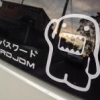Announcements
-
Similar Content
-
Latest Posts
-
Meant it’s 2WD. And my tank is cracked.
-
T51R mod is an Antisurge slot. With exception that it has few extra legs on the base of it which makes a sound, and it needed to be inserted into the comp housing.
-
Is WHC34 a 2 wheel drive Stagea? 4wd Stagea 100% fits, and I'd say 99% sure 2wd will too....they just used the GTR setup as that best suited the wagon floor. BTW I hope you saw Brett's post about potential reasons for a leak, unless you can see the plastic cracked somewhere, it is unlikely to be the tank itself leaking. Can you see fuel dripping or is it just a smell when you park? Have you had any of the tank/pump holder apart?
-
They did get back to me. First response is from the mechanic that did the work. The problem is that the information that followed wasn't in the original report, which again, I let car inspect know should have been provided and influenced my decision to buy. Ball is back in their court and they have 5 more days to respond. The actual structural damage was not a complete write off as they had me originally believe. It just needed to be corrected properly and cleanly as opposed to the botch job of whoever did it last on the rad support and undercarriage. Smoothed out the scrappy welds and did it properly plus painted.
-






Recommended Posts